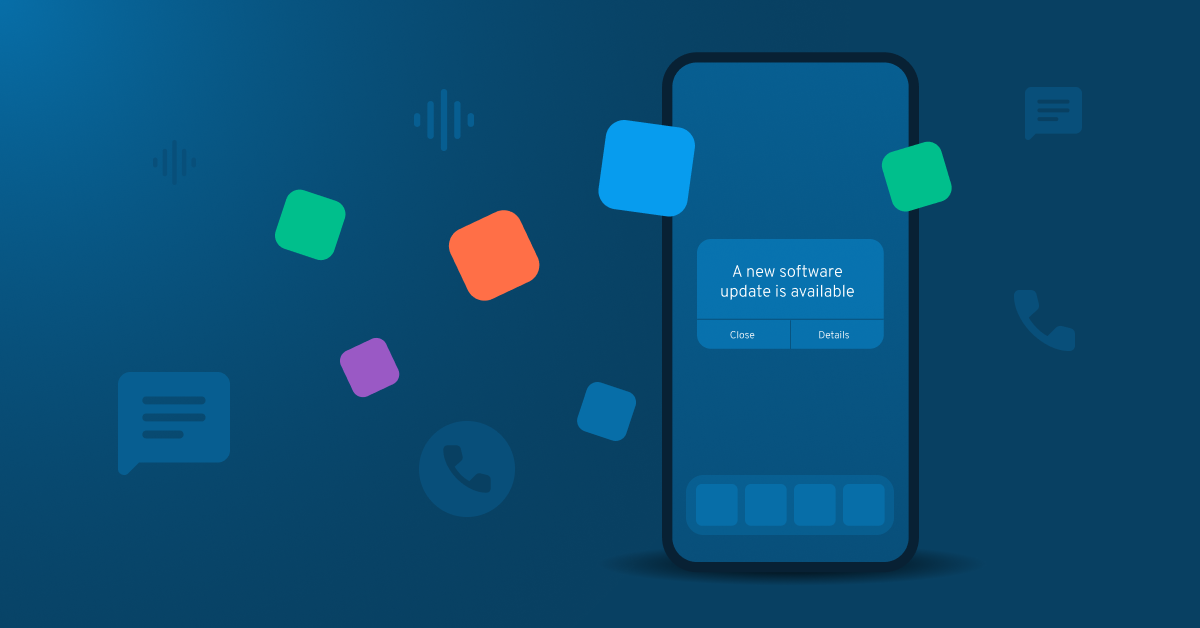iOS 16 is coming
Apple releases their iOS updates like clockwork, with new iPhone software released every year (since the first iPhone in 2007) to add features and improve the overall experience. 2022 will be no different.
On June 6, Apple announced its big yearly operating system (OS) updates at the Worldwide Developers Conference (WWDC) during their keynote speech. There is arguably no product more important to Apple and its customers than the iPhone – so all eyes and ears were paying attention when the conversation shifted to iOS 16.
iOS 16 was expected to add plenty of new features, and Apple didn’t disappoint. Many customers are excited about upcoming enhancements, like the lock screen getting a major overhaul, “Focus” mode now extending to the lock screen and Apple Pay’s accessibility with merchants. Meanwhile, Bandwidth was paying attention for another reason.
Specifically, we were looking at how a few changes to Apple’s native Messages Application might impact the A2P messaging ecosystem. The ones that caught our attention were:
In this blog, we’ll cover:
- Apple’s global market penetration
- The new iOS releases in greater detail
- The potential impact on the global SMS ecosystem
iOS global market penetration
To understand the potential impact, it’s important to start with Apple’s market penetration to identify the population that might be affected by these releases. Specifically, we were looking at how a few changes to Apple’s native Messages Application might impact the A2P messaging ecosystem, also known as business SMS.
While Apple has the majority of market share compared to Android in the US, the story is different around the globe. As of June 2022, Apple’s iOS accounted for ~27% of the global mobile-OS market share while Android’s OS accounted for ~72%.
Apple iOS has 27% of the global mobile OS market share

When you look at where Apple iOS has a majority of the market share, it is in a few key markets: United States, United Kingdom, Canada, and Australia.
Apple iOS accounts for more than 50% of the market share in a few key markets

Relevant A2P messaging releases within iOS 16
As we dive into the iOS 16 enhancements below, it is important to note that Android users running Google Messages already have access to similar features to those that Apple plans to introduce.
Now, let’s explore these two updates.
Simplified SMS/MMS SPAM reporting
Overview
Apple is automating the little-known process of reporting SMS SPAM using the short code 7726 (which spells “SPAM”) in the US and UK.
iOS will extend an existing feature called “Report as Junk” to the first message received from an unknown number. “Report as Junk” was previously available for iMessage, with junk iMessages able to be reported to Apple, but the new option also covers SMS/MMS messages and makes it easier to report spam directly to participating wireless carriers. Android users with Google Messages have had access to a similar feature since Android 7.0 (Nougat), was first released in 2017.
Early reports show that carrier participation in this is still to be determined. It is unclear if Apple will publish a list of participating carriers in each country.
SMS Ecosystem Impact
Overall, this should have a positive impact on the SMS ecosystem because it gives mobile subscribers greater control over their experience. However, there are concerns that easier reporting for mobile users might lead to over-reporting or incorrect reporting of business messages as SPAM.
The new reporting system should reduce SPAM and increase trust in the ecosystem, which should encourage higher open and read rates. Businesses with poor opt-in practices will be hit the hardest as mobile subscribers begin to feed SPAM reporting tools with better data.
Enhanced APIs for SMS filtering
Overview
Apple is looking to greatly enhance SMS filtering capabilities. Filtering here only refers to the organization of the messages within the iMessages app. The new update allows developers of filter extensions to classify non-personal messages into 12 subcategories within “Transactions” and “Promotions.” This enhancement is similar to Android’s current SMS filtering capabilities.
Below, you can see a view of the new sub-categories in the messages application.

Additional things to note:
- Apple is now in the filtering business – Apple has quietly been testing its own SMS filtering solution in India and Brazil. Third-party app developers in this space need to be aware of this native, “free” filtering as a potential market alternative to their products.
- Potential poor third-party user experience continues – In iOS 15 and earlier, a third-party app converted all short code messages to “Junk” and delivered silent messages. Getting notified of two-factor authentication messages, flight information, and important delivery updates were all treated with the same indignity as unsolicited home flippers seeking to buy your house.
- Filtering is not “ON” by default – Currently, neither Apple nor Google Messages turn on SMS filtering by default. We think Apple’s recent focus on consumer privacy may translate to guided onboarding for SMS filtering in the future. But, we’ll have to see.
SMS Ecosystem Impact
Filtering APIs should have a positive impact on the SMS ecosystem because mobile subscribers get the final say in what types of SMS are wanted and unwanted. Customers will have another way to protect themselves from unwanted messages.
On the other hand, there are legitimate long-term concerns as it relates to A2P messaging. With categories, there is a definite possibility that messages could be improperly categorized as “Junk” or other and, therefore, not seen by mobile subscribers.
Businesses with poor opt-in practices will likely be hit hard, since this may lead to a “Junk” classification. They are strongly encouraged to refine their opt-in processes so their brand can experience the best representation possible within the SMS mobile application.
Check out these best practices and guidelines for different A2P messaging use cases.
Conclusion: Impact on the global SMS Ecosystem
Together, these iOS improvements are the most significant changes to Apple’s Messaging App since iOS 11, which was released in Fall 2017. Of the two enhancements, SMS filtering presents a long-term challenge for customer engagement rates via legitimate A2P messaging. Historically, the messaging channel has seen great engagement, upwards of 98% read-rates. On the other hand, simplified SPAM reporting is an overall positive for the ecosystem, as carriers will have data to better identify and filter unwanted SPAM.
Here are the five key points about Apple’s announcement concerning the global SMS ecosystem:
- iOS users win – if they know how to: While this is a positive for mobile subscribers, only users who know and actively seek a solution to SMS filtering will benefit.
- Strong opt-in processes reign supreme: Brands that follow industry best practices with strong opt-in policies should continue to see strong read and response rates with SMS. Businesses that have poor opt-in management and send unwanted messages will feel an immediate impact.
- Apple is following Android: Android users running Google Messages have already benefited from similar features, meaning that a similar experience to Apple’s update has already been in the market – meaning we generally know the impact.
- Apple iOS dominance is only relevant in a few countries: As of June 2022, Apple iOS accounted for 27% of the global mobile OS market share. The countries where Apple has a meaningful market share include the USA, UK, Canada, and Australia.
- Automating SMS filtering needs some work – The user experience for enabling SMS filtering is not automated and requires steps to enable it on both Apple and Android mobile OS. This will likely change over time.
Bandwidth has been a strategic partner for hundreds of A2P messaging customers navigating regulations and changes in the messaging ecosystem. Want to talk more with a Bandwidth expert about ensuring your messages continue to create great engagements?




